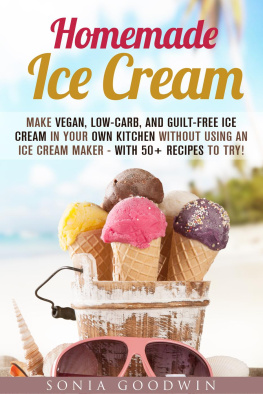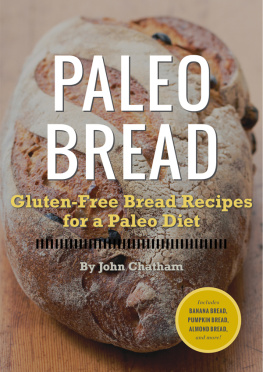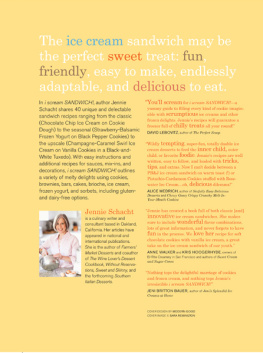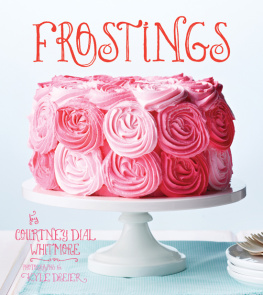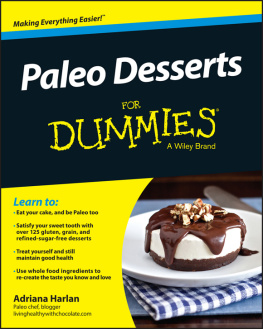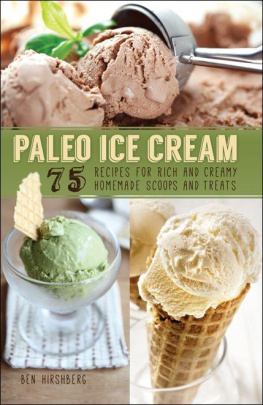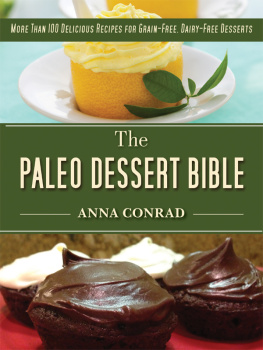


Text Copyright 2014 Ben Hirshberg. Design and concept copyright 2014 Ulysses Press and its licensors. All rights reserved. Any unauthorized duplication in whole or in part or dissemination of this edition by any means (including but not limited to photocopying, electronic devices, digital versions, and the Internet) will be prosecuted to the fullest extent of the law.
Published by
Ulysses Press
P.O. Box 3440
Berkeley, CA 94703
www.ulyssespress.com
ISBN: 978-1-61243-387-5
Library of Congress Catalog Number 2014932308
10 9 8 7 6 5 4 3 2 1
Acquisitions editor: Kelly Reed
Managing editor: Claire Chun
Project editor: Alice Riegert
Editor: Beverly McGuire
Proofreader: Renee Rutledge
Front cover design/interior layout and design: what!design @ whatweb.com
Cover photography: vanilla ice cream dana2000/shutterstock.com, chocolate ice cream tacar/shutterstock.com, green tea Ice cream Piyato/shutterstock.com, strawberry ice cream Christian Jung/shutterstock.com; strawberry cheesecake ice cream MaraZe/shutterstock.com; coffee ice cream Kati Molin/shutterstock.com; blueberry sorbet verca/shutterstock.com
Distributed by Publishers Group West
IMPORTANT NOTE TO READERS: This book is independently authored and published and no sponsorship or endorsement of this book by, and no affiliation with, any trademarked brands or other products mentioned within is claimed or suggested. All trademarks that appear in this book belong to their respective owners and are used here for informational purposes only. The author and publisher encourage readers to patronize the quality brands and products mentioned in this book.
For my dad, Rich; my mom, Wendi; my girlfriend, Kelsey; and all of the other good people out there.
TABLE OF CONTENTS
Paleo ice cream. On its face, it sounds like an oxymoron. What kind of purportedly healthy diet includes ice cream!? It sounds even more heinous when you examine the concept of paleo. Our ancestors from the Paleolithic era certainly werent chowing down on fudge bars. So what gives?
The paleo concept is interpreted differently by different people. Some paleo folks believe that followers of the diet should completely abstain from eating anything that was not eaten 10,000 years ago. Others believe that paleo eaters should consume only meat and vegetables while restricting carbohydrate intake. Still other paleo supporters think that the paleo diet is just a template from which to work and that the focus should be on eating whole foods rather than on restriction. I fall into the last camp. I believe that the purpose of paleo is not to try and reenact life from the Paleolithic era. For me, eating paleo is instead about consuming the whole, nutrient-dense foods that we evolved to eat.
Viewed in that light, ice cream can very much be included in ones diet so long as it is made up of nutritious ingredients. That is where things get tricky, though, because most store-bought ice cream is made from very processed, nutrient-poor ingredients.
I know this all too well, because I still ate store-bought ice cream before writing this cookbook. Being a health nerd, I would always read the ingredient list on the back of the carton. It isnt pretty. Milk that probably came from sick, sedentary cows; lots of refined, white sugar; and a long list of chemicals that I couldnt pronounce. Yikes! But what was I to do? I love my ice cream!
One beautiful spring day, my girlfriend, Kelsey, surprised me with a picnic lunch in the Washington Park Arboretum. For our main course, we had the usual fare: spaghetti squaswh with ground beef marinara sauce and a kale-strawberry salad. But the dessert blew my mind. It was homemade (the very same recipe included in this book on page 38).
First of all, how does one bring ice cream to a picnic and keep it frozen? Second, it tasted amazing! Then she told me it was PALEO ice cream. As we ate the whole container and licked the lid, Kelsey told me all about how she used coconut milk, honey, and egg yolks for the ice cream base. For the rest of the day, my mind was spinning thinking about all of the recipes I could try using Kelseys ice cream base recipe.
And try them I did. That summer I made ice cream several times a week, and sometimes multiple times a day. I couldnt resist the ice cream experimentation. At the end of the summer I self-published an eBook containing all of my favorite recipes, and many people loved it. Some were left wanting more recipes, though, so I went back to work.
Partway through my revamping process, Ulysses Press emailed me and told me theyd like to acquire my title. The timing was perfect! The lovely folks at Ulysses helped me focus where I needed to focus and add where I needed to add; they even gave me flavor suggestions.
What you are holding is the culmination of my ice cream escapades: a collection of ice cream recipes that are not only extremely tasty, but also full of whole food ingredients and plentiful in the essential nutrients needed for us to live healthfully.
So no, cavemen probably didnt eat ice cream, contrary to what you would believe if you watched Fred Flintstone run around in his ice cream truck. But if you view paleo as a diet made up of nutritious whole foods, then ice cream can fit into that box quite nicely. Thats right: ice cream can be a healthy dessert option if it is made with nourishing ingredients. So throw off the bowlines, sail away from the harbor, catch the trade winds in your sails. And make some ice cream!
This book contains three main types of ice cream recipes: traditional, banana, and cashew. The banana and cashew butter recipes are quite straightforward: they are made with a base of either bananas or cashew butter. There isnt too much wiggle room for ingredient substitution and tweaking. Sure, you can increase or decrease quantities of ingredients or maybe substitute certain supporting ingredients. But the base of those recipes will always be bananas or cashew butter.
This is not so for the more traditional recipes. For these recipes, the ice cream base can be tweaked quite extensively, and it is in your best interest to customize the recipes to make them exactly how you want them. What follows is a quick primer on how to best make the traditional ice cream recipes for your preferences and needs.
SUBSTITUTIONS
ICE CREAM BASES
To start, you should know that you can substitute any dairy product or dairy alternative for the one listed in the recipe. For example, in the (page 18), I list coconut milk as the main base ingredient. If you dont like how coconut milk tastes, you can substitute any nut milk, or if you eat dairy, cream, or half and half. It all depends on how well your body and taste buds tolerate certain ingredients. Here is a quick rundown of all of the dairy products and dairy alternatives:
Full-fat coconut milk: This is usually sold in cans and is probably the most commonly used paleo ice cream base. It has plenty of healthy fats, so it is rich and thick, just like the cream and milk used in traditional ice cream. Its flavor is too much for some people, adored by others, and can be masked by strong flavors such as mint extract, coffee, and so on.
Almond milk and reduced-fat coconut milk: These are usually sold in cartons, are much thinner, and often have a less distinct flavor than full-fat coconut milk. They are best used in flavors that can be turned into a sorbet, such as coconut or blackberry. If you do want a creamier taste with almond milk or reduced-fat coconut milk, you can simply add extra egg yolks.
Next page

